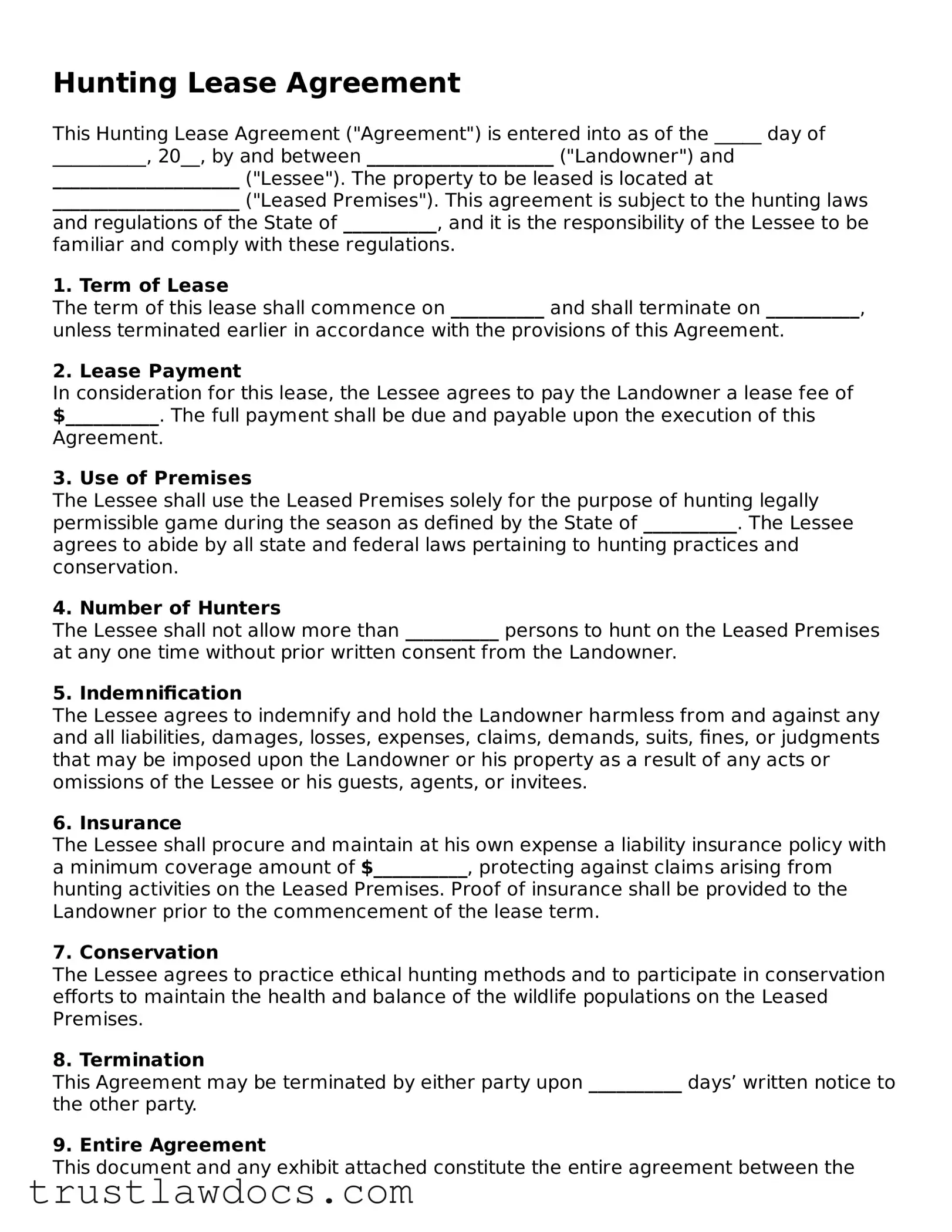Hunting Lease Agreement
This Hunting Lease Agreement ("Agreement") is entered into as of the _____ day of __________, 20__, by and between ____________________ ("Landowner") and ____________________ ("Lessee"). The property to be leased is located at ____________________ ("Leased Premises"). This agreement is subject to the hunting laws and regulations of the State of __________, and it is the responsibility of the Lessee to be familiar and comply with these regulations.
1. Term of Lease
The term of this lease shall commence on __________ and shall terminate on __________, unless terminated earlier in accordance with the provisions of this Agreement.
2. Lease Payment
In consideration for this lease, the Lessee agrees to pay the Landowner a lease fee of $__________. The full payment shall be due and payable upon the execution of this Agreement.
3. Use of Premises
The Lessee shall use the Leased Premises solely for the purpose of hunting legally permissible game during the season as defined by the State of __________. The Lessee agrees to abide by all state and federal laws pertaining to hunting practices and conservation.
4. Number of Hunters
The Lessee shall not allow more than __________ persons to hunt on the Leased Premises at any one time without prior written consent from the Landowner.
5. Indemnification
The Lessee agrees to indemnify and hold the Landowner harmless from and against any and all liabilities, damages, losses, expenses, claims, demands, suits, fines, or judgments that may be imposed upon the Landowner or his property as a result of any acts or omissions of the Lessee or his guests, agents, or invitees.
6. Insurance
The Lessee shall procure and maintain at his own expense a liability insurance policy with a minimum coverage amount of $__________, protecting against claims arising from hunting activities on the Leased Premises. Proof of insurance shall be provided to the Landowner prior to the commencement of the lease term.
7. Conservation
The Lessee agrees to practice ethical hunting methods and to participate in conservation efforts to maintain the health and balance of the wildlife populations on the Leased Premises.
8. Termination
This Agreement may be terminated by either party upon __________ days’ written notice to the other party.
9. Entire Agreement
This document and any exhibit attached constitute the entire agreement between the Landowner and Lessee. No oral agreements, understandings or representations not specifically mentioned in this document shall have any effect.
10. Governing Law
This Agreement shall be governed and construed in accordance with the laws of the State of __________. Any dispute arising from this Agreement shall be resolved in the courts of the said state.
- Landowner Signature: __________________________________ Date: __________
- Lessee Signature: _____________________________________ Date: __________
